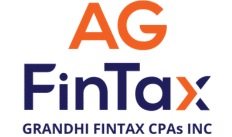Dear Client:
How much is clarity worth?
A lot, a whole lot.
And how much is making things easier worth? Of course, it’s a lot, a whole lot, too.
We now have both the new (a) clarity and (b) easy road to Paycheck Protection Program (PPP) loan forgiveness for the self-employed with no employees. Get ready to smile.
New Easy Road to 100 Percent Forgiveness
Say thanks to the Paycheck Protection Program Flexibility Act of 2020. This new law creates a 24-week period for you to spend your PPP loan proceeds.
If you obtained your loan proceeds before June 5, you can elect to use the eight-week period to spend your PPP loan proceeds.
Here’s the big difference:
If the 24-week covered period applies, your loan forgiveness for your deemed payroll is capped at 2.5 months of your 2019 Schedule C net profit, not to exceed $20,833.
- If you elect the eight-week covered period, your loan forgiveness for your deemed payroll is capped at eight weeks, not to exceed $15,385.
Why Is This Important?
When you file as a Schedule C taxpayer and have no employees, your PPP loan is based on 2.5 times your 2019 Schedule C, line 31, net profit, limited to $20,833.
Here’s how the loan amount works:

Okay, you have your loan proceeds either in hand or in play at this point.
Let’s keep our eyes on the “easy road” to forgiveness. Under the new 24-week rule, you achieve 100 percent forgiveness when you pay yourself the total loan amount within 10.8 weeks of the date you received your loan proceeds. Let’s round the 10.8 to 11 weeks.
Yes, you are reading this correctly. By simply using the loan proceeds on yourself during the first 11 weeks, you achieve total forgiveness.
Note this. By using the 11 weeks, you achieve total PPP loan forgiveness without having to spend any money on rent, utilities, or interest.
When Can I Apply for Forgiveness?
According to SBA guidance issued on June 22, 2020, you may submit your loan forgiveness application anytime on or before the maturity date of the loan—including before the end of the covered period—if you used all the loan proceeds for which you requested forgiveness.
Example:
Ron receives his $20,833 PPP loan on May 15, 2020. He puts the money in his business checking account. During the 11 weeks beginning with May 15, 2020, Ron writes checks to himself that total $20,833. Ron can apply for $20,833 of loan forgiveness anytime after the 11th week.
Is It Really This Easy?
Yes!
What About Interest, Rent, and Utilities?
With the 11-week program described above, you don’t have to consider interest, rent, or utilities to achieve 100 percent forgiveness.
In fact, why bother? By simply using the 11 weeks, you have less paperwork and worry.
Of course, you might want to consider interest, rent, and utilities if this takes you to earlier forgiveness. To obtain full forgiveness, you could spend as little as 60 percent on payroll and the balance on interest, rent, and utilities.
Example:
Jane files a Schedule C and has no employees, and on June 1, 2020, she obtains a PPP loan of $20,000. During the first eight weeks, Jane spends $12,000 on herself and $8,000 on qualified Schedule C deductible business interest, rent, and utilities. Jane can elect the eight-week period and qualify for 100 percent forgiveness.
Here are the basic PPP forgiveness requirements that apply to your 2020 Schedule C business deduction payments for interest, rent, and utilities:
- Interest payments on any business mortgage obligation on real or personal property where such obligation was in place before February 15, 2020 (but not any prepayment or payment of principal).
- Payments on business rent obligations on real or personal property under lease agreements in force before February 15, 2020.
- Business utility payments for the distribution of electricity, gas, water, transportation, telephone, or internet access for which service began before February 15, 2020.
Meet the Paid Rule
On page 2 of the 3508EZ instructions, you find this:
Enter any amounts paid to a self-employed individual. For a 24-week Covered Period, this amount is capped at $20,833 (the 2.5-month equivalent of $100,000 per year) for each individual or the 2.5-month equivalent of their applicable compensation in 2019, whichever is lower.
We may suffer from unfounded paranoia because we find the word “paid” a word to be reckoned with. But in our opinion, you should have your Schedule C business write you checks from its business account. If there’s no separate business account, make sure the business writes checks that pay your personal expenses in the amount of the deemed compensation.
If you would like to discuss this PPP forgiveness rule with me, please don’t hesitate to call me on my direct line at +1 425-395-4318
Sincerely,
Anil Grandhi.




